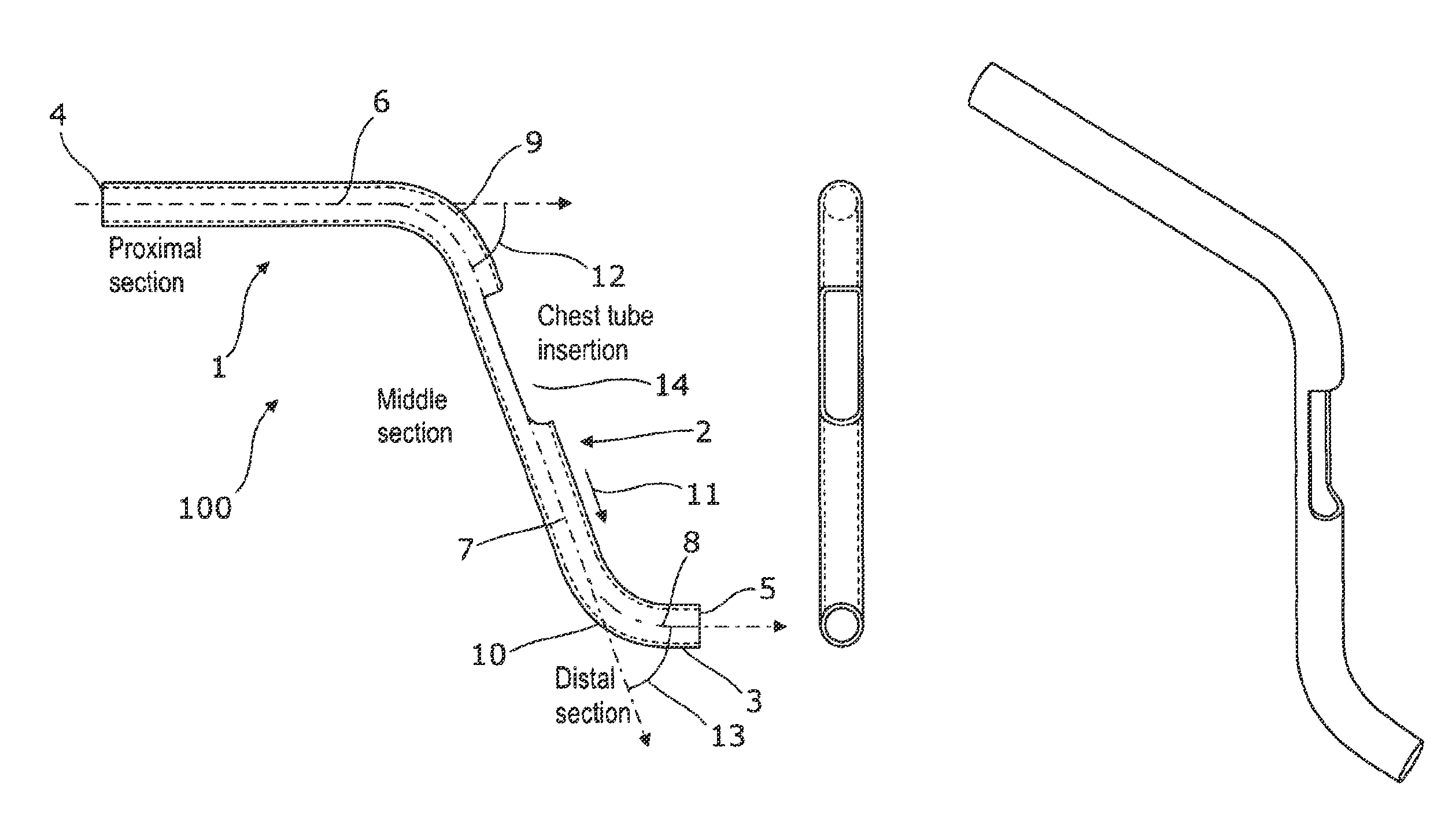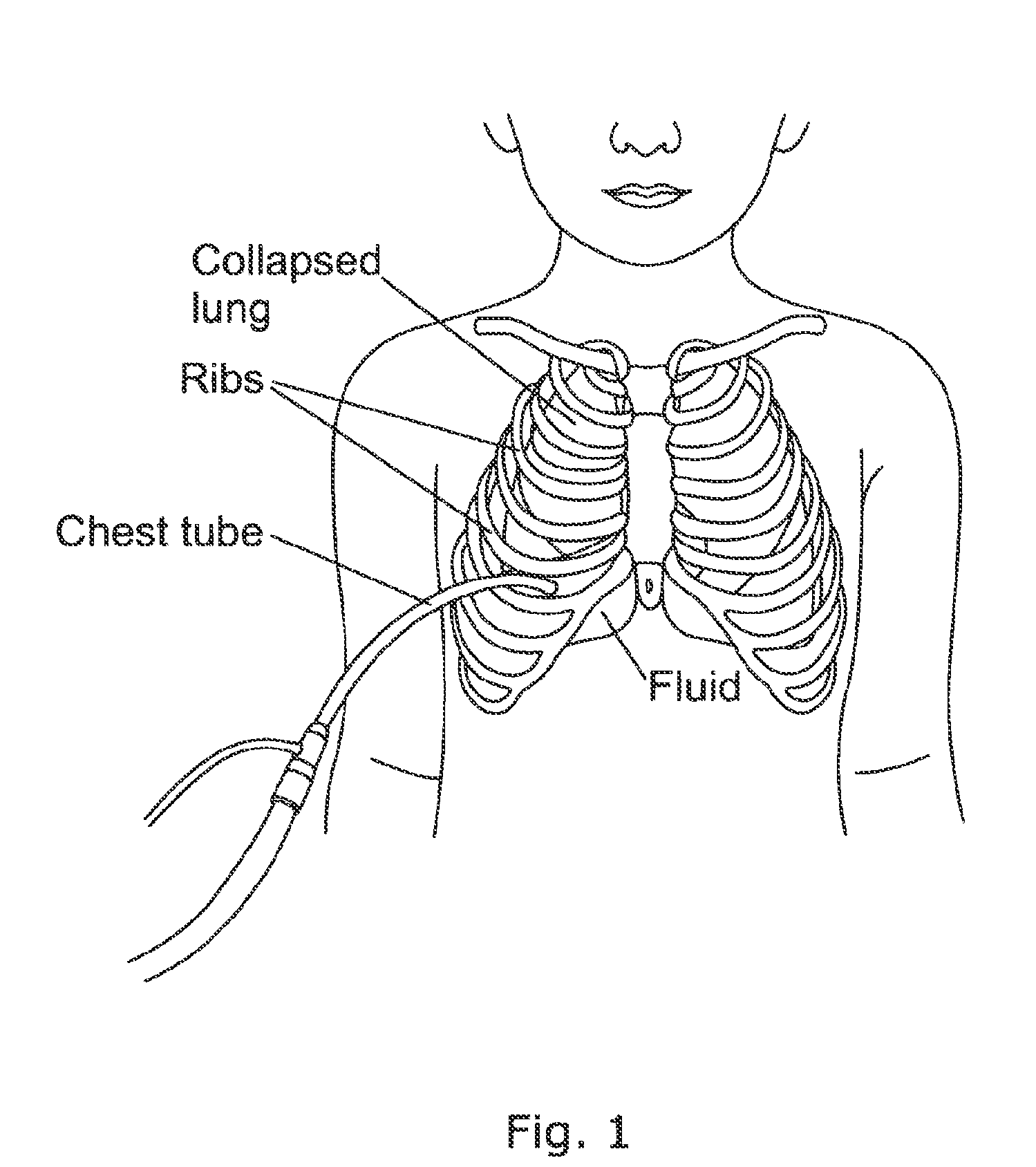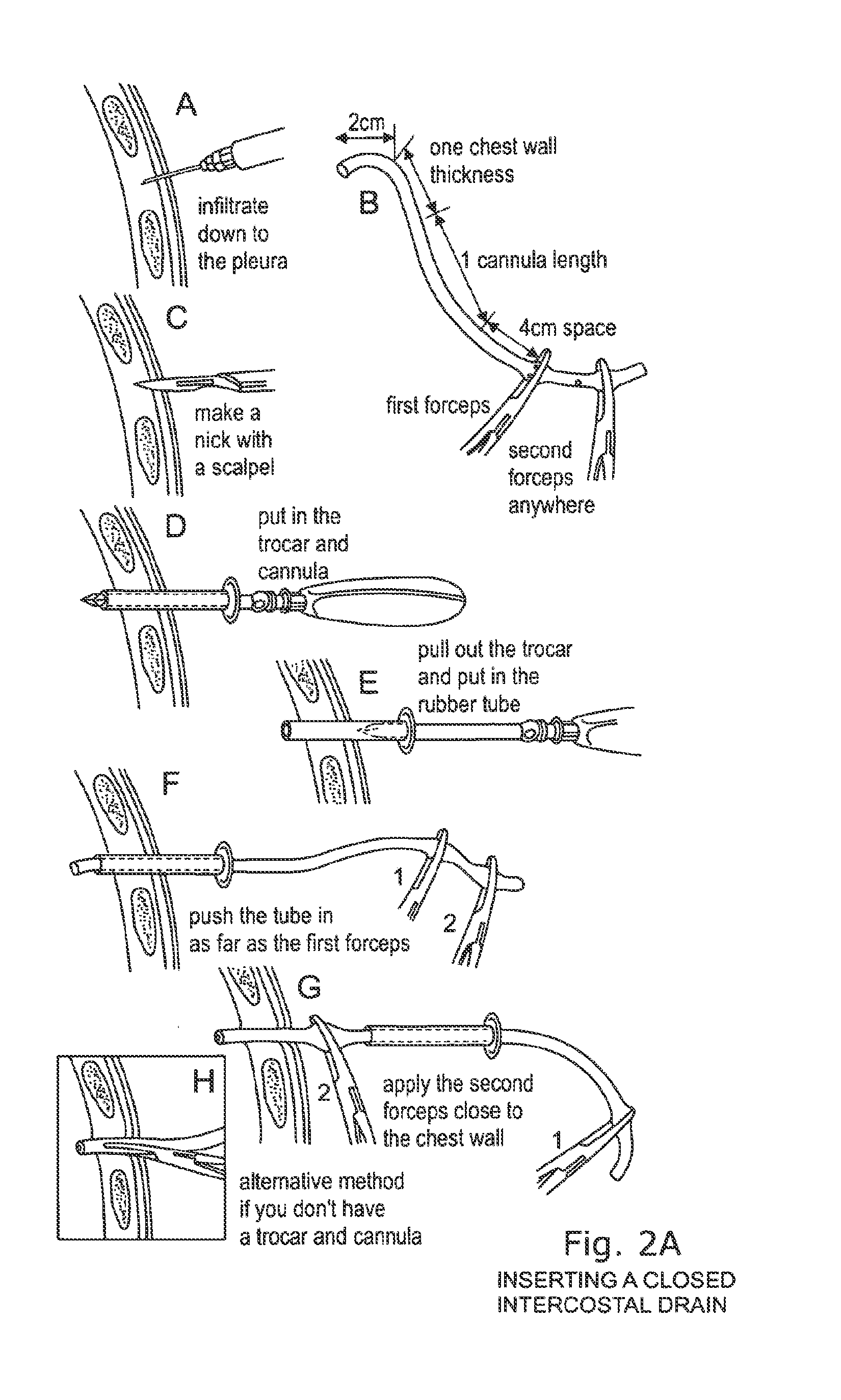device
a guiding device and catheter technology, applied in the field of surgery, can solve the problems of prolonging hospital admission, increasing the risk of infection through the chest tube passage, and severe discomfort for patients, and achieve the effect of accurately directing a pleural tube and treating or alleviating symptoms
- Summary
- Abstract
- Description
- Claims
- Application Information
AI Technical Summary
Benefits of technology
Problems solved by technology
Method used
Image
Examples
example
[0273]A device according to the present invention was tested and a catheter was inserted on a dead pig. The procedure disclosed below was adapted. An 80 kg pig that expired a few minutes before the testing, was positioned on the back. A passage to the pleural cavity through the right lateral chest wall was created by using the blunt dissection technique.
[0274]A total of 25 chest tube insertions (Ch32) were performed. The intended position of the tip of the chest tube was the top of the chest cavity, mimicking the ideal position in case of a pneumothorax. The distance from the skin incision point to the top of the pleural cavity was measured on the outer surface of the chest wall using the chest tube, and a pair of forceps was placed on the chest tube as a marker for the intended dept of the chest tube insertion.
[0275]The distal part of the device was inserted through the passage and the extreme end of the distal section was pointed in the direction of the top of the pleural cavity. ...
PUM
 Login to View More
Login to View More Abstract
Description
Claims
Application Information
 Login to View More
Login to View More - R&D
- Intellectual Property
- Life Sciences
- Materials
- Tech Scout
- Unparalleled Data Quality
- Higher Quality Content
- 60% Fewer Hallucinations
Browse by: Latest US Patents, China's latest patents, Technical Efficacy Thesaurus, Application Domain, Technology Topic, Popular Technical Reports.
© 2025 PatSnap. All rights reserved.Legal|Privacy policy|Modern Slavery Act Transparency Statement|Sitemap|About US| Contact US: help@patsnap.com



